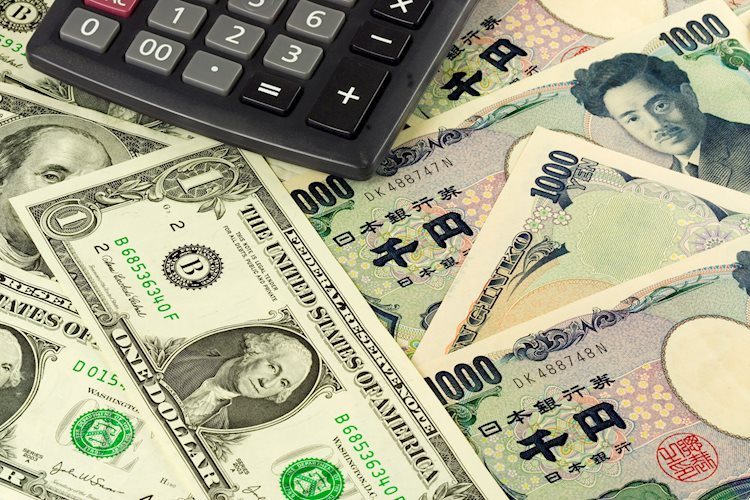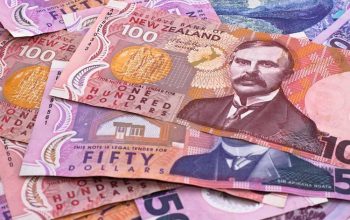- USD/JPY rises to near 145.00 as the US Dollar recovers strongly.
- Upbeat US Consumer Confidence eases US hard landing fears.
- Investors await the Tokyo CPI and the US core PCE inflation for July.
The USD/JPY pair climbs to near 145.00 in Wednesday’s North American session. The asset strengthens as the US Dollar (USD) delivers a strong recovery move after posting a fresh annual low. The USD rebounds as upbeat United States (US) Consumer Confidence data for August diminished fears of a hard landing.
Market experts started anticipating a hard landing for the US economy after the US Nonfarm Payrolls (NFP) report for July showed a slowdown in labor demand and a significant increase in the Unemployment Rate. The hard landing is a scenario in which the economy enters a recession in an attempt to bring inflation down to the bank’s target.
US Conference Board showed on Tuesday that Consumer Confidence rose to 103.30 in August, beating expectations of 100.7. The sentiment indicator exhibits the confidence of individuals in the economic prospects.
Meanwhile, the market sentiment appears to be risk-off as investors turn cautious ahead of the US core Personal Consumption Expenditure price index (PCE) data for July, which will be published on Friday. The S&P 500 has posted nominal losses in the North American session. The US Dollar Index (DXY), which tracks the Greenback’s value against six major currencies, recovered strongly above 101.00 from a fresh annual low of 100.50.
The underlying inflation data is expected to influence market speculation for the Federal Reserve (Fed) interest rate cut path. Financial markets currently expect that the Fed will begin reducing interest rates from the September meeting. Traders remain split over the likely rate-cut size.
On the Japanese Yen (JPY) front, investors await the Tokyo Consumer Price Index (CPI) data for August, which will be published on Friday. The data is expected to show that Tokyo CPI excluding Fresh foods rose steadily by 2.2{721fc769be108e463fe4e33f629fb22fe291c423a7a69eaaf65dcb28e9b05dea} in August. The inflation data will influence market speculation for the Bank of Japan’s (BoJ) interest rate hike path.
Japanese Yen FAQs
The Japanese Yen (JPY) is one of the world’s most traded currencies. Its value is broadly determined by the performance of the Japanese economy, but more specifically by the Bank of Japan’s policy, the differential between Japanese and US bond yields, or risk sentiment among traders, among other factors.
One of the Bank of Japan’s mandates is currency control, so its moves are key for the Yen. The BoJ has directly intervened in currency markets sometimes, generally to lower the value of the Yen, although it refrains from doing it often due to political concerns of its main trading partners. The current BoJ ultra-loose monetary policy, based on massive stimulus to the economy, has caused the Yen to depreciate against its main currency peers. This process has exacerbated more recently due to an increasing policy divergence between the Bank of Japan and other main central banks, which have opted to increase interest rates sharply to fight decades-high levels of inflation.
The BoJ’s stance of sticking to ultra-loose monetary policy has led to a widening policy divergence with other central banks, particularly with the US Federal Reserve. This supports a widening of the differential between the 10-year US and Japanese bonds, which favors the US Dollar against the Japanese Yen.
The Japanese Yen is often seen as a safe-haven investment. This means that in times of market stress, investors are more likely to put their money in the Japanese currency due to its supposed reliability and stability. Turbulent times are likely to strengthen the Yen’s value against other currencies seen as more risky to invest in.



